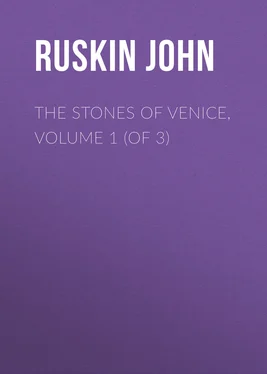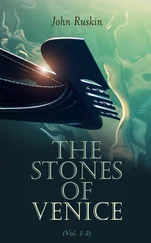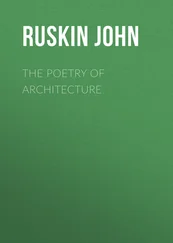Appendix 8, “The Northern Energy.”
Appendix 9, “Wooden Churches of the North.”
Appendix 10, “Church of Alexandria.”
Appendix 11, “Renaissance Landscape.”
Selvatico, “Architettura di Venezia,” p. 147.
Selvatico, p. 221.
The older work is of Istrian stone also, but of different quality.
Appendix 12, “Romanist Modern Art.”
Appendix 13, “Mr. Fergusson’s System.”
Appendix 14, “Divisions of Humanity.”
Triglyph. Literally, “Three Cut.” The awkward upright ornament with two notches in it, and a cut at each side, to be seen everywhere at the tops of Doric colonnades, ancient and modern.
Pediment. The triangular space above Greek porticoes, as on the Mansion House or Royal Exchange.
Appendix 15: “Instinctive Judgments.”
Many walls are slightly sloped or curved towards their tops, and have buttresses added to them (that of the Queen’s Bench Prison is a curious instance of the vertical buttress and inclined wall); but in all such instances the slope of the wall is properly to be considered a condition of incorporated buttress.
On the eastern side: violently contorted on the northern and western.
The experiment is not quite fair in this rude fashion; for the small rolls owe their increase of strength much more to their tubular form than their aggregation of material; but if the paper be cut up into small strips, and tied together firmly in three or four compact bundles, it will exhibit increase of strength enough to show the principle. Vide, however, Appendix 16, “Strength of Shafts.”
Appendix 17, “Answer to Mr. Garbett.”
Yet more so than any other figure enclosed by a curved line: for the circle, in its relations to its own centre, is the curve of greatest stability. Compare § XX. of Chap. XX.
In saying this, it is assumed that the interval is one which is to be traversed by men; and that a certain relation of the shafts and intervals to the size of the human figure is therefore necessary. When shafts are used in the upper stories of buildings, or on a scale which ignores all relation to the human figure, no such relative limits exist either to slenderness or solidity.
Vide the interesting discussion of this point in Mr. Fergusson’s account of the Temple of Karnak, “Principles of Beauty in Art,” p. 219.
I have assumed that the strength of similar shafts of equal height is as the squares of their diameters; which, though not actually a correct expression, is sufficiently so for all our present purposes.
How far this condition limits the system of shaft grouping we shall see presently. The reader must remember, that we at present reason respecting shafts in the abstract only.
The capitals being formed by the flowers, or by a representation of the bulging out of the reeds at the top, under the weight of the architrave.
I have not been at the pains to draw the complicated piers in this plate with absolute exactitude to the scale of each: they are accurate enough for their purpose: those of them respecting which we shall have farther question will be given on a much larger scale.
The largest I remember support a monument in St. Zeno of Verona; they are of red marble, some ten or twelve feet high.
The effect of this last is given in Plate VI.of the folio series.
The entire development of this cross system in connexion with the vaulting ribs, has been most clearly explained by Professor Willis (Architecture of Mid. Ages, Chap. IV.); and I strongly recommend every reader who is inclined to take pains in the matter, to read that chapter. I have been contented, in my own text, to pursue the abstract idea of shaft form.












